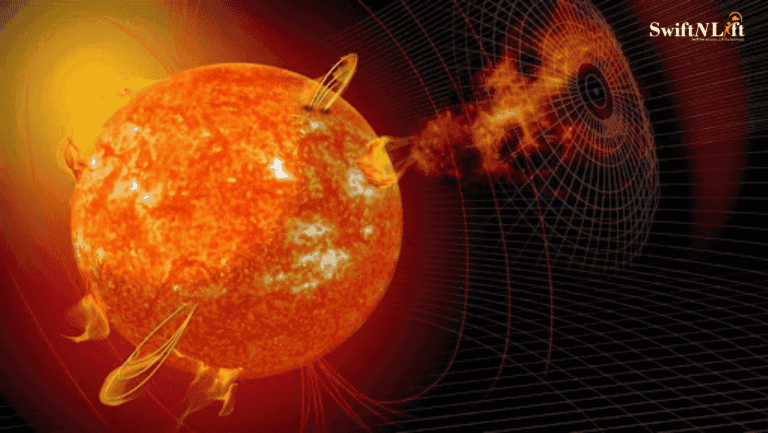
Explore the awe-inspiring spectacle of the largest solar flare in years, captured by NASA’s Solar Dynamics Observatory. Delve into the complexities of solar dynamics, the impact on Earth’s technology, and the crucial role of space weather forecasting. Uncover the mysteries of our celestial neighbour as we navigate the delicate dance between the sun and our technologically reliant world.
In a cosmic dance that has captivated astronomers and space enthusiasts alike, the sun recently treated Earth to a stunning celestial spectacle – the largest solar flare in years. The eruption, a dazzling display of solar fireworks, not only showcased the sun’s extraordinary power but also had tangible effects on radio signals on our planet. As captured by NASA’s Solar Dynamics Observatory, this event marks a significant milestone in our understanding of solar dynamics and highlights the complex interplay between the sun and Earth.
The Solar Firework Display:
The solar flare in question emanated from the far northwest section of the sun, leaving a mesmerizing imprint on the space around it. NASA’s state-of-the-art Solar Dynamics Observatory, perched high above Earth, recorded the event as a brilliant flash, underscoring the sheer magnitude of energy released. This eruption, accompanied by a massive radio burst, temporarily disrupted radio signals in parts of the United States and other sunlit areas.
A Glimpse into Solar Dynamics:
The sun, our cosmic powerhouse, is an ever-changing celestial body with a dynamic life cycle governed by an 11-year solar cycle. This recent flare comes as the sun approaches the peak of its current cycle, showcasing the heightened activity that characterizes this phase. Solar flares are eruptions of intense radiation, a manifestation of the sun’s magnetic energy releasing in a burst of light and heat. Understanding these events is crucial not only for scientific curiosity but also for the practical implications they pose for technology here on Earth.
Impact on Earth’s Technology:
The mesmerizing beauty of a solar flare is not without consequences for our technologically reliant world. The accompanying radio burst from the recent flare temporarily interfered with radio signals on Earth, particularly affecting communication systems in parts of the United States. This serves as a poignant reminder of the vulnerability of our technological infrastructure to the unpredictable whims of our stellar neighbor.
Unraveling the Solar Mysteries:
NASA’s continuous observation of the sun through instruments like the Solar Dynamics Observatory enables scientists to delve deeper into the intricacies of solar phenomena. By studying these events, researchers hope to unravel the mysteries of the sun’s behavior, understand the underlying processes that drive solar flares, and ultimately improve our ability to predict and mitigate their impact on Earth.
The Importance of Space Weather Forecasting:
As humanity relies more on advanced technologies susceptible to space weather disturbances, accurate forecasting becomes paramount. Solar flares, with their potential to disrupt communication and navigation systems, underscore the need for robust space weather prediction models. NASA’s vigilance in monitoring the sun’s activity aids in the development of these models, enhancing our ability to anticipate and mitigate the impact of solar eruptions on our interconnected technological infrastructure.
The recent solar flare, a dazzling manifestation of the sun’s energy, not only delighted sky gazers but also temporarily disrupted radio signals on Earth. As we stand on the cusp of the sun’s 11-year cycle peak, these celestial events serve as both a reminder of the sun’s power and a call to action for improved space weather forecasting. By unlocking the secrets of solar dynamics, we inch closer to a future where we can navigate the challenges posed by our celestial neighbor and fully appreciate the intricate dance between the sun and Earth.



